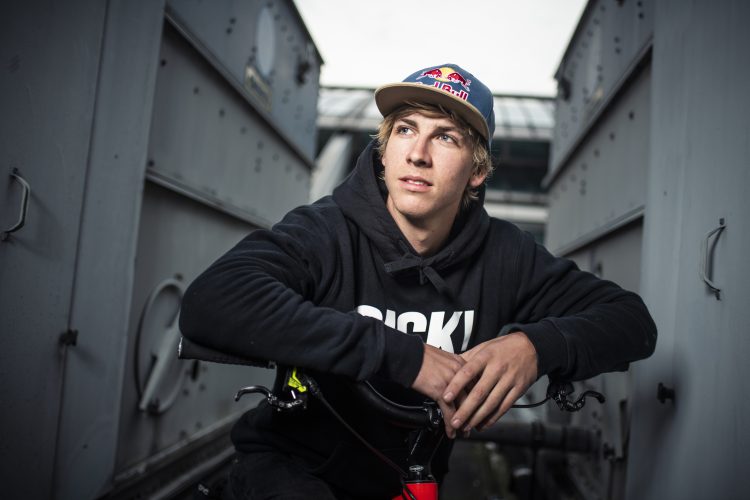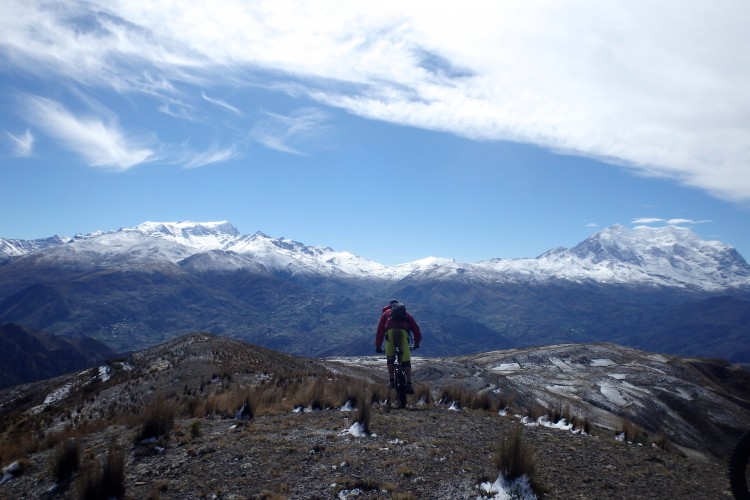
“Variety is the spice of life” goes the old cliché. It is not just the spice of life in an overall sense, but also the spice of various elements of life, mountain biking being one of them. Variety in trail types is a sure-fire route to keeping your ride spicy. When I chose to settle permanently in one location, variety of mountain biking trails was a key criterion, right up there with opportunity for employment, proximity to extended family, and good schools for my children. Even knowing I wanted variety at the time, I didn’t know just how beneficial it would be. Here’s my ode to the diversity of dirt that keeps the sport of mountain biking fresh and spicy at all times.
Trail Types
Singletrack

Singletrack is the tread that needs no introduction. It is the tread mountain bikes are designed for. It is what each and every one of us seeks on each and every ride. It is the Holy Grail of mountain biking. This site is named “Singletracks.” There are no print or e-pubs devoted to doubletrack or dirt roads; the only ones devoted to moto or jeep trails actually have motorcyclists and jeepers as their target audience, not mountain bikers.
[see_also id=”187561″][/see_also]
Even by itself, singletrack offers tremendous variety. Singletrack may be tight and twisty or swoopy and fast; it may be smooth or rocky, hardpacked or loose, carefree or heart-in-your-throat scary. There are certainly worse fates than being relegated to singletrack only. In fact, most mountain bikers would leap at such a setup.
However… they’d be selling themselves short. What about…
Slickrock?

Oh yes, slickrock! That most fabled, and for most riders, inaccessible riding surface. Go to any top 10 trail list and most if not all rides listed will be singletrack. But throughout mountain biking history, the most famous trail of all is not singletrack, but rather Moab’s Slickrock Trail. While the Slickrock Trail has understandably fallen from the pinnacle as the most popular mountain bike route in existence, many other slickrock routes, both around Moab and beyond, have moved in to take its place. While slickrock is plentiful only in the desert Southwest, it exists in smaller quantities far and wide. I have ridden expanses of open rock in Michigan and am looking forward to doing so in North Carolina in the near future. I expect a little Eastern slickrock will add some spicy variety to my riding resume.
Doubletrack

Doubletrack is just two singletracks side-by-side, so it should be twice as much to love, right? Alright, I know it doesn’t work like that, but let’s not throw doubletrack in the dirt bike dustbin just yet. While doubletrack may not have much appeal to the singletrack purist, there’s plenty of doubletrack out there worth sinking your knobbies into. In fact, some of the most scenic trails I’ve ever ridden have been doubletrack. It seems those old motorized routes were often put where they were for a reason, and that same reason can be enjoyed, maybe even to a greater extent, by a mountain biker.
Oh yeah, if you only ride one track of doubletrack, it eventually reverts into singletrack!
ATV/Moto Trails
It’s easy to discount ATV/motorcycle trails. They are often rutted, loose, and rarely ideal for mountain biking. But some can be truly exhilarating. Those moto riders love their berms and whoop-de-dos. They also have no problem throwing in drops and rollers on the downhill and major step-ups on the climbs. I have found many a moto trail that yielded both great amusement and technical training opportunities. I have a great example close to home in the Captain Jack’s trail, a long-time moto route that just screams down the mountain and has become a solid favorite among mountain bikers. But don’t take my word for it; none other than Joe Breeze cited this as one of his all time favorite trails!
Jeep Trails

Just as most poo-poo moto trails, I did the same with jeep trails. Why would anybody ride anything that wide on a bike? Then I went to Moab. One of my riding buddies was raving about the jeep trails there and I couldn’t see it. He said “I have plenty of singletrack right here in Colorado Springs; I go to Moab for something different.” And he wasn’t just talking about slickrock. The cool thing about jeep trails is that, while singletrack offers that single track, jeep trails offer multiple lines, often very different in nature. It is common that hitting one side of the jeep trail may be a gentle roller while the other side is a mandatory huck. For most singletrack, every time you ride it, you’re going to ride it much the same, but with jeep trails, the endless string of different line choices may mean you can have a completely different experience on every outing.
Pavement
Okay, ya got me here. Pavement may be necessary to complete a loop that includes some righteous singletrack or slickrock, but I can see no reason to ever ride a mountain bike on pavement for pavement’s sake. That’s what road bikes are for.
Trail Configurations
What’s under your knobbies isn’t the only thing providing spice to your ride; the trail configuration also helps dictate the experience, and once again, variety is welcome. Just like trail type, some configurations are more desirable than others, but all can make for a great individual experience, while simultaneously keeping the overall sport interesting.
The Loop

The loop is the configuration equivalent of singletrack as a trail surface; it is generally the preferred trail configuration. There is no backtracking, no retracing steps, no intersections, and no shuttle required. There is just continually fresh trail in one seamless ribbon of dirt that fortunately ends up right where it started. Everybody loves a good loop.
The Lollipop

The Lollipop, also known as the Lariat Loop, is simply a loop on the end of a stem. The ride starts and ends with an out-and-back, but has a loop at its far end. The relative desirability of the lollipop is often predicated on how much of the total mileage is loop and how much is stem. Lollipops are often necessary, as the only way to get to some killer loops is to link to them by means of an out-and-back, but there’s nothing wrong with that. You still get the killer loop, and the out-and-back may still be very worthwhile (more on that later).
The Shuttle

A shuttle rides much like a loop, with a continuous, forward-moving ribbon of dirt; it just doesn’t wrap back around to its starting point. The problem is that shuttles require a car and driver to execute the drop off/pick up. Logistically, this turns a ride into something of a chore. Yet many of the most popular rides are shuttles. Just because you can’t finish where you started is no reason to skip a ride! Shuttles can facilitate many miles of continuous downhilling or simply allow for a marvelous bit of point-to-point cross country riding. Without shuttles, there would be no Whole Enchilada, no Downieville Downhill, or no way to experience maximum mileage on great cross country rides like the Maah Daah Hey trail or North Umpqua, limiting riders to just short out-and-back snippets of these epic rides. Shuttles are so popular that the most desired among them are served by commercial shuttle services, so even if you don’t have a pal ready to drop you off, you can still hitch a ride.
The Network

The network, by its very nature, can offer the most variety for a ride. While some networks are largely homogeneous, many serve up a veritable smorgasbord of fat tire options. A great network may have long stretches of level or roller coaster riding attached to huge climbs and descents, plus segments of tight and twisty connected to segments of fast and swoopy, and non-technical cross country hammering linked to batches of total gnar and chunk. With a great network, a rider can go there again and again and never have the same experience twice, simply by altering the number and sequencing of trail segments ridden. A network may include any or all of the trail types and configurations covered in this entire article!
The Out-and-Back

Ahhh, the lonely out-and-back; the trail configuration that gets no respect. “I don’t want to ride that trail; it’s an out-and-back.” This is a bit short-sighted. I remember during the scouting days of my youth, being trained, as insurance against getting lost, to turn and look back frequently on any outing because everything looks completely different going the other way. So it is with bike trails. A good out-and-back is really like two different trails in one, providing two completely different experiences conveniently starting and ending at the same point.
Your turn: How do you keep up the variety in your riding? Share your techniques in the comments section below.



















